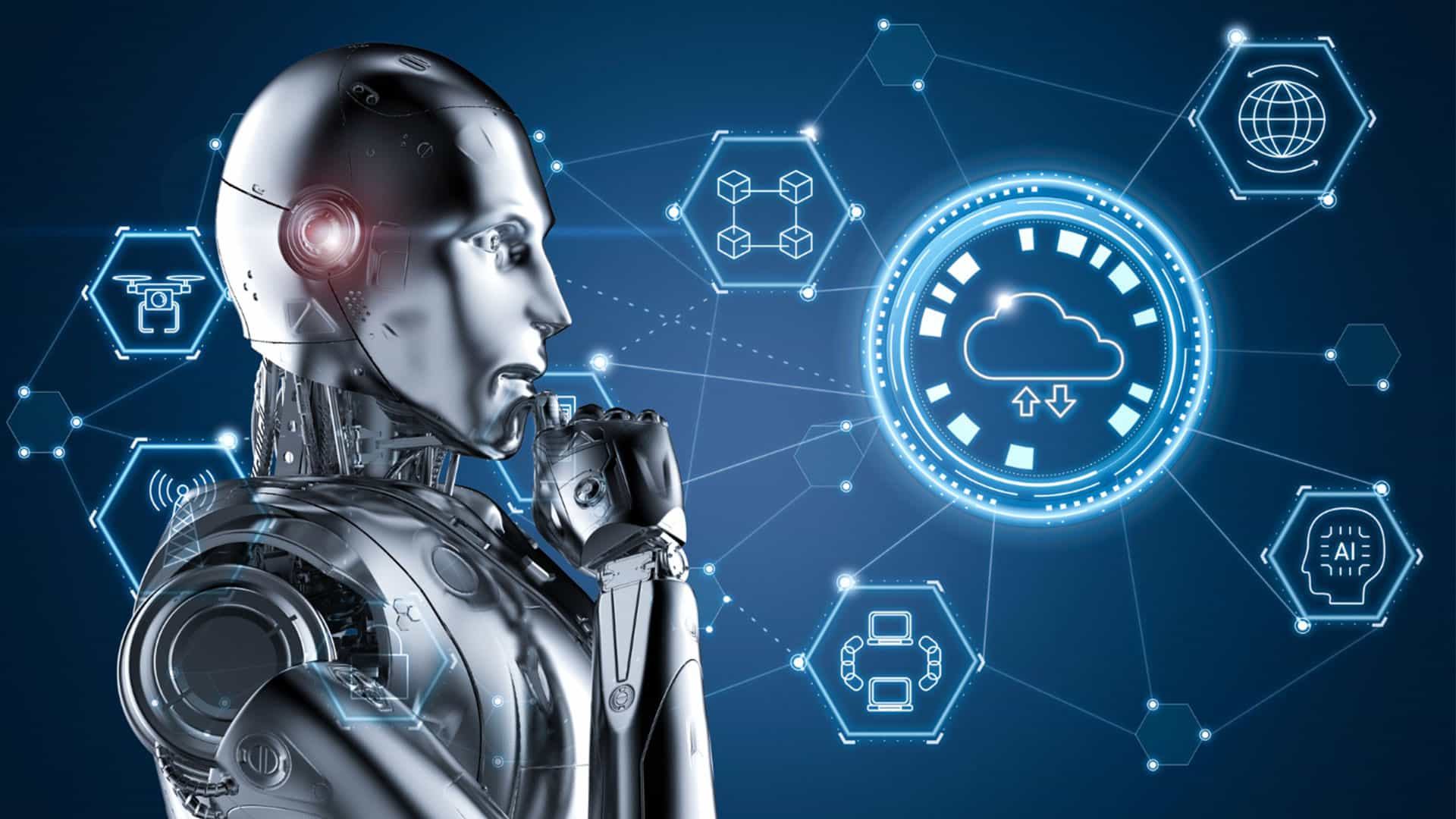As an AI-first company, contributing to the conversation on Agentic AI, a topic gaining strong momentum among technology and business leaders, was a natural step. Abhilash Vantaram, our VP and Head of Emerging Technologies, has captured this pivotal shift in his white paper titled “The Agentic Shift: Redefining Business with Autonomous AI.”
In this blog, I share a preview of our ‘in demand’ white paper that explores how enterprises can move from assistance to autonomy and turn intelligent systems into proactive business partners.
As a marketing leader working closely with our innovation and technology teams, I often get a front-row view of transformative trends before they hit the mainstream. One such shift that’s gathering momentum across industries is ‘Agentic AI.’
Imagine an AI system that doesn’t just respond to commands — but plans, decides, and acts on your behalf. From real-time diagnostics in healthcare to personalized recommendations in retail, intelligent agents are already transforming industries.
This is the era of Agentic AI, where automation is steadily moving towards autonomy.
From Assistants to Agents: A Paradigm Shift in AI
Artificial Intelligence has gone through several evolutionary waves. First came rule-based systems – basic if-then logic that could execute predefined tasks. Then, predictive machine learning models enabled pattern recognition and forecasting. More recently, generative AI (GenAI) introduced natural language interfaces, allowing AI to create content, summarize documents, and converse like humans.
But, if you come to think of it, even GenAI for all its sophistication remains reactive. It needs a prompt. It waits for instructions. Enter Agentic AI: systems that operate independently, understand context, and take initiative.
These are not just smart tools. They are goal-driven digital collaborators, capable of engaging with environments, orchestrating tasks, and continuously improving themselves with minimal human input.
Why Now? The Business Case for Agentic AI
Enterprises today face mounting pressure to do more with less. They’re expected to deliver faster services, personalized experiences, and smarter operations while reducing costs and improving agility. Agentic AI offers a powerful solution to
- Enhance productivity by automating multi-step, cross-functional workflows
- Improve decision-making through contextual intelligence and feedback loops
- Boost customer satisfaction by anticipating needs and acting proactively
- Create new digital revenue streams through intelligent personalization and automation
According to recent industry reports, 82% of organizations plan to adopt Agentic AI frameworks in the next 1–3 years. Those who act early will define the next competitive curve.
What Makes Agentic AI Different?
While GenAI focuses on content generation, Agentic AI is about action. It brings together multiple layers of intelligence:
-
LLMs (Large Language Models)
Understand and reason using human-like language, enabling rich natural interactions.
-
Memory
Retain long-term and session-based context, allowing agents to learn from previous interactions and personalize future ones.
-
Planning Modules
Break down user goals into executable steps, prioritizing tasks and sequencing actions based on logic and intent.
-
Tool Integration
Connect with external applications and APIs to actually perform tasks, such as triggering workflows, fetching data, or updating records.
-
Multi-modal Input
Interpret voice, text, images, and video, allowing seamless omnichannel experiences.
-
Feedback Loops
Learn through feedback loops and correction to improve performance, reduce errors, and increase reliability over time.
GenAI vs. Agentic AI: A Quick Comparison
Regional and Global Examples
| Capability | GenAI | Agentic AI |
| Requires prompts | Yes | No |
| Takes action | No | Yes |
| Understands context | Partially | Deep context awareness |
| Personalization | Basic | Dynamic and learning-based |
| Goal-driven | No | Yes |
Across Industries: Real-World Impact
Agentic AI isn’t just in books. It’s already making an impact across industries:
Retail
A global beauty retailer uses intelligent agents to recommend personalized skincare routines. By combining historical data, live preferences, and real-time stock levels, the agent builds curated carts — increasing sales and reducing returns. The result: improved conversion and customer satisfaction.
Telecom
A leading North American telecom provider leverages Agentic AI to autonomously manage network bandwidth, flag anomalies, and resolve outages — all without human intervention. This has helped reduce downtime and operational costs significantly.
Healthcare
A prominent nonprofit medical system integrates multimodal AI agents to assist with diagnostics, document summarization, and care plan recommendations. This reduces administrative workload and allows healthcare professionals to focus more on patient care.
BFSI
A global investment bank has deployed Agentic AI to automate legal document review and compliance workflows. By analyzing contracts and flagging inconsistencies, the system has saved hundreds of thousands of hours annually.
Manufacturing & Cybersecurity
In factories, AI agents monitor machinery, predict breakdowns, and schedule maintenance proactively. In cybersecurity, agents triage alerts, investigate incidents, and trigger mitigation protocols, reducing analyst fatigue and improving response times.
Designing Agentic AI in Your Enterprise
Deploying Agentic AI is not just about adopting new tools. It’s about strategically designing autonomous systems that align with your business goals. At InfoVision, we follow a structured 5-stage model:
-
Define
Identify high-impact use cases where autonomy can add measurable value.
-
Design
Create an agent architecture — mapping workflows, choosing tools, and planning integrations.
-
Deploy
Run controlled pilots to validate functionality, track KPIs, and gather feedback.
-
Develop
Implement continuous learning loops, retraining models based on real-world performance.
-
Govern
Establish guardrails around ethics, compliance, and human oversight to ensure responsible AI behavior.
Challenges and Considerations
Despite its promise, Agentic AI comes with important challenges that organizations must address thoughtfully:
- Ethical risk: Agents trained on biased or incomplete data can perpetuate discrimination. Transparency in design and explainable AI tools are essential for trust.
- Oversight and control: While autonomy is the goal, it should never come at the cost of control. Organizations must define when human intervention is required and design effective escalation paths.
- Security and compliance: Agents often interact with sensitive data and systems. Proper safeguards, audit trails, and access controls must be built into their design.
- Workforce readiness: Employees may resist or misunderstand AI systems. Successful adoption depends on upskilling teams and fostering a culture of co-innovation.
Understanding and navigating these considerations early can ensure a safer and more scalable deployment of Agentic AI.
Leading the Agentic Shift
Agentic AI is more than a technology trend — it’s a foundational shift in how enterprises function. It redefines roles, processes, and the relationship between humans and machines.
The most successful leaders in this shift will be those who embrace orchestration over micromanagement, who use AI not as a substitute for people but as a force multiplier for innovation.
As intelligent systems take on more responsibility, human leaders must evolve – from managing tasks to architecting ecosystems of collaboration between people and AI agents.
The time to lead is now.
Partner with InfoVision
At InfoVision, we help enterprises design, build, and scale Agentic AI frameworks tailored to their strategic goals. Our phased approach ensures minimal disruption, ethical integration, and tangible business outcomes.
Let’s build intelligent systems that don’t just assist — they act.




